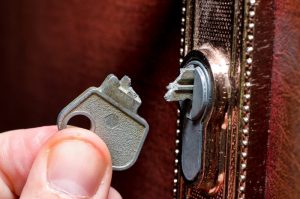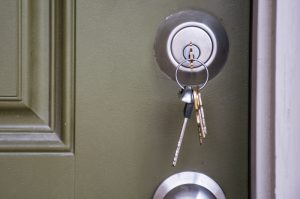How to Fix a Jammed Lock?
People usually pay little attention to locks when everything works well, but a simple jammed lock could severely disrupt your schedule and bring enormous stress and inconvenience. It is not uncommon that people find themselves locked out of their cars or houses after a tiring day. You may be afraid of breaking the budget by calling a Locksmith. Here are the basic steps you could take to tackle the jammed locks, so you won’t panic if the storm comes.
You can diagnose the possible problems by analyzing different scenarios of jammed locks as listed below. To save your time, we will only mention the basic tools for fixing the problems and you can prepare those handy stuff at home as an essential investment for life. If you are not confident or comfortable dealing with your jammed locks by yourself, don’t hesitate to contact a local Locksmith in Ottawa for help, which is always a recommended solution. Before you call for professional service, you can check the following tips for the major two scenarios of jammed locks.
Scenario 1: You can’t insert your key
Possible problems: build-up dirt, broken key inside
Tools to use: graphite based lubricant, graphite powder, key extractor
 If you can’t insert your key with normal strength for several trials, don’t force it, and you should realize that you have a jammed lock now. You can apply the graphite based lubricant or spray the graphite powder over the key to slide into the lock. The lubricant could help clear build-up dirt or debris that block the path. Flipping the key slightly should open the door.
You might also face a more complicated situation if you break the key inside of the lock or you see a broken key with a flashlight. Stop inserting your key immediately because you can push the stuck part further into the lock, which makes it even more difficult to extract. While it is always better to have a Locksmith to inspect the severity of the problem to fix it more efficiently, you can try to insert the key extractor on top of the broken key inside, hook the tip of the broken key and slowly push it outside. It does require experience and practice to make it right, so just take your time. If the broken key you extract does not belong to you or any of your family members, you should be aware that it might be a unattempted break in. You might consider upgrade, rekey or replace the lock for safety purposes.
Scenario 2: You insert the key, but it won’t turn
Possible problems: rusted, frozen
Tools to use: hammer, sandscraper, graphite based lubricant, lighter or blow dryer
If you can’t insert your key with normal strength for several trials, don’t force it, and you should realize that you have a jammed lock now. You can apply the graphite based lubricant or spray the graphite powder over the key to slide into the lock. The lubricant could help clear build-up dirt or debris that block the path. Flipping the key slightly should open the door.
You might also face a more complicated situation if you break the key inside of the lock or you see a broken key with a flashlight. Stop inserting your key immediately because you can push the stuck part further into the lock, which makes it even more difficult to extract. While it is always better to have a Locksmith to inspect the severity of the problem to fix it more efficiently, you can try to insert the key extractor on top of the broken key inside, hook the tip of the broken key and slowly push it outside. It does require experience and practice to make it right, so just take your time. If the broken key you extract does not belong to you or any of your family members, you should be aware that it might be a unattempted break in. You might consider upgrade, rekey or replace the lock for safety purposes.
Scenario 2: You insert the key, but it won’t turn
Possible problems: rusted, frozen
Tools to use: hammer, sandscraper, graphite based lubricant, lighter or blow dryer
 A rusted lock will require more patience and extra steps. First you need to wipe out the exterior rusts with a sandscraper and spray the lubricant inside of the key hole. Give it a couple minutes to dissolve the debris and you can gently knock the keyhole with a small hammer. Then you can try to put in the key to turn around. If you still feel the resistance, you can repeat the above steps. Just be cautious and don’t break the lock as it might be old.
Another common reason for the malfunction of the lock might be the cold weather. In this case, temperature matters as you need to melt the freezed debris inside. You can use a lighter or blow dryer to heat the key, and wiggle it back and forth. Usually you need to heat the key several times before it can finally work. Again you should be patient and careful whenever you are working with locks without professional help.
The above two scenarios are just a simplified version of the possible problems. It is always safer and more efficient to contact the local Locksmith for a comprehensive diagnosis and quick fix. Capital Locksmith offers 24/7 professional, reliable and affordable locksmith services across Ottawa and the surrounding area. Our licensed and experienced technicians will address all of your concerns and make sure your locks function well to protect your property. For more advice and assistance call Capital Locksmith at (613) 457-5135. Book now!
A rusted lock will require more patience and extra steps. First you need to wipe out the exterior rusts with a sandscraper and spray the lubricant inside of the key hole. Give it a couple minutes to dissolve the debris and you can gently knock the keyhole with a small hammer. Then you can try to put in the key to turn around. If you still feel the resistance, you can repeat the above steps. Just be cautious and don’t break the lock as it might be old.
Another common reason for the malfunction of the lock might be the cold weather. In this case, temperature matters as you need to melt the freezed debris inside. You can use a lighter or blow dryer to heat the key, and wiggle it back and forth. Usually you need to heat the key several times before it can finally work. Again you should be patient and careful whenever you are working with locks without professional help.
The above two scenarios are just a simplified version of the possible problems. It is always safer and more efficient to contact the local Locksmith for a comprehensive diagnosis and quick fix. Capital Locksmith offers 24/7 professional, reliable and affordable locksmith services across Ottawa and the surrounding area. Our licensed and experienced technicians will address all of your concerns and make sure your locks function well to protect your property. For more advice and assistance call Capital Locksmith at (613) 457-5135. Book now!
 If you can’t insert your key with normal strength for several trials, don’t force it, and you should realize that you have a jammed lock now. You can apply the graphite based lubricant or spray the graphite powder over the key to slide into the lock. The lubricant could help clear build-up dirt or debris that block the path. Flipping the key slightly should open the door.
You might also face a more complicated situation if you break the key inside of the lock or you see a broken key with a flashlight. Stop inserting your key immediately because you can push the stuck part further into the lock, which makes it even more difficult to extract. While it is always better to have a Locksmith to inspect the severity of the problem to fix it more efficiently, you can try to insert the key extractor on top of the broken key inside, hook the tip of the broken key and slowly push it outside. It does require experience and practice to make it right, so just take your time. If the broken key you extract does not belong to you or any of your family members, you should be aware that it might be a unattempted break in. You might consider upgrade, rekey or replace the lock for safety purposes.
Scenario 2: You insert the key, but it won’t turn
Possible problems: rusted, frozen
Tools to use: hammer, sandscraper, graphite based lubricant, lighter or blow dryer
If you can’t insert your key with normal strength for several trials, don’t force it, and you should realize that you have a jammed lock now. You can apply the graphite based lubricant or spray the graphite powder over the key to slide into the lock. The lubricant could help clear build-up dirt or debris that block the path. Flipping the key slightly should open the door.
You might also face a more complicated situation if you break the key inside of the lock or you see a broken key with a flashlight. Stop inserting your key immediately because you can push the stuck part further into the lock, which makes it even more difficult to extract. While it is always better to have a Locksmith to inspect the severity of the problem to fix it more efficiently, you can try to insert the key extractor on top of the broken key inside, hook the tip of the broken key and slowly push it outside. It does require experience and practice to make it right, so just take your time. If the broken key you extract does not belong to you or any of your family members, you should be aware that it might be a unattempted break in. You might consider upgrade, rekey or replace the lock for safety purposes.
Scenario 2: You insert the key, but it won’t turn
Possible problems: rusted, frozen
Tools to use: hammer, sandscraper, graphite based lubricant, lighter or blow dryer
 A rusted lock will require more patience and extra steps. First you need to wipe out the exterior rusts with a sandscraper and spray the lubricant inside of the key hole. Give it a couple minutes to dissolve the debris and you can gently knock the keyhole with a small hammer. Then you can try to put in the key to turn around. If you still feel the resistance, you can repeat the above steps. Just be cautious and don’t break the lock as it might be old.
Another common reason for the malfunction of the lock might be the cold weather. In this case, temperature matters as you need to melt the freezed debris inside. You can use a lighter or blow dryer to heat the key, and wiggle it back and forth. Usually you need to heat the key several times before it can finally work. Again you should be patient and careful whenever you are working with locks without professional help.
The above two scenarios are just a simplified version of the possible problems. It is always safer and more efficient to contact the local Locksmith for a comprehensive diagnosis and quick fix. Capital Locksmith offers 24/7 professional, reliable and affordable locksmith services across Ottawa and the surrounding area. Our licensed and experienced technicians will address all of your concerns and make sure your locks function well to protect your property. For more advice and assistance call Capital Locksmith at (613) 457-5135. Book now!
A rusted lock will require more patience and extra steps. First you need to wipe out the exterior rusts with a sandscraper and spray the lubricant inside of the key hole. Give it a couple minutes to dissolve the debris and you can gently knock the keyhole with a small hammer. Then you can try to put in the key to turn around. If you still feel the resistance, you can repeat the above steps. Just be cautious and don’t break the lock as it might be old.
Another common reason for the malfunction of the lock might be the cold weather. In this case, temperature matters as you need to melt the freezed debris inside. You can use a lighter or blow dryer to heat the key, and wiggle it back and forth. Usually you need to heat the key several times before it can finally work. Again you should be patient and careful whenever you are working with locks without professional help.
The above two scenarios are just a simplified version of the possible problems. It is always safer and more efficient to contact the local Locksmith for a comprehensive diagnosis and quick fix. Capital Locksmith offers 24/7 professional, reliable and affordable locksmith services across Ottawa and the surrounding area. Our licensed and experienced technicians will address all of your concerns and make sure your locks function well to protect your property. For more advice and assistance call Capital Locksmith at (613) 457-5135. Book now! 